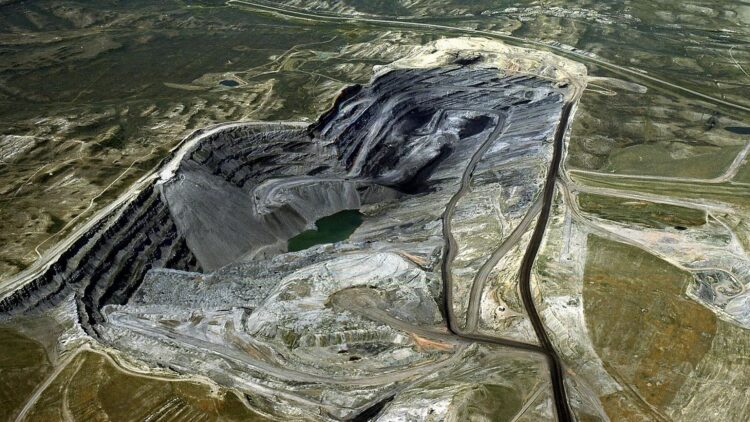The Black Thunder thermal coal mine, located at the Southern Powder River Basin in the U.S. state of Wyoming, is a remarkable yet alarming energy source. Opened in 1977, it has not only been a powerhouse in coal production (or “black energy) but also exemplifies the ongoing reliance on traditional fossil fuels.
With over three billion tons of coal shipped during its lifetime, this mine continues to operate, raising concerns about the environmental implications of such a substantial and active resource.
Black Thunder: A history of black energy production
The Black Thunder mine is located approximately 43 miles south of Gillette, Wyoming. Once the world’s largest coal operation, it was the first to transport a billion tons of coal and continues to be a critical contributor to U.S. energy production, supplying over 10% of the nation’s coal.
In 1998, the mine’s ownership moved from ARCO Coal to Arch Resources, the second-largest coal miner in America, following ARCO’s exit from the coal industry. In 2009, Arch merged Black Thunder with the Jacobs Ranch mine it had purchased, solidifying its status as the world’s largest coal mining complex.
Black Thunder’s reserves primarily tap into the Wyodak seam, part of the vast Fort Union formation. With an estimated 747.7 million tons of proven and probable reserves as of December 2019, the mine demonstrates great geological wealth. Arch Resources further expanded its holdings by acquiring additional reserves, bringing the total to over 1.37 billion tons.
Since its establishment, Black Thunder has produced roughly 2.2 billion tons of coal, marking its historical significance in American coal production. In 2004, it became the first U.S. coal mine to ship a cumulative total of over one billion tons, showcasing its operational prowess. The mine’s coal is characterized as low-sulfur and sub-bituminous, which makes it ideal for power generation with minimal processing.
Black Thunder’s mining operations
The mining operations at Black Thunder leverage advanced technology and equipment. It utilizes six draglines, 22 shovels, and 148 haul trucks to handle its extensive coal extraction processes.
The largest dragline, Ursa Major, was assembled on-site and weighs approximately 6,700 tons, highlighting the scale of operations at the mine.
Coal is extracted from multiple open pits, with substantial overburden managed through draglines and blasting techniques. Once extracted, the coal is transported via a 2.8-mile overland conveyor to storage and loadout facilities. These are essential for accommodating the high transportation demands of coal distribution.
Both the Burlington Northern and Union Pacific rail systems service the operation, enabling coal shipments across the country.
The environmental and economic implications of black energy production cannot be ignored
The Powder River Basin, home to the mine, is the largest coal-producing region in the United States, contributing about 37% of the country’s total coal output. In 2007, this region alone generated 436 million short tons, far surpassing all other coal-producing regions.
This ongoing reliance on coal raises important concerns regarding environmental impact, greenhouse gas emissions, and the future of energy consumption in America.
As the biggest single coal mining complex in the world, Black Thunder presents a huge challenge in the shift to cleaner energy sources. The mine’s operational longevity and vast reserves pose questions about sustainability and environmental responsibility in energy production.
The Black Thunder coal mine serves as a major symbol of America’s extensive coal resources, with still more left to extract. However, this reliance on coal highlights a troubling dependence on traditional fossil fuels amid growing environmental concerns. As the world embraces sustainable energy strategies, the future of operations such as at Black Thunder must be closely evaluated to reduce their impact on the planet.

